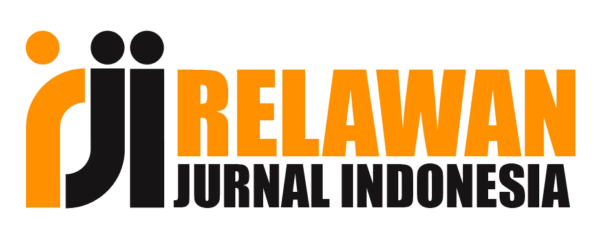Penggunaan media virtual laboratory dalam pembelajaran untuk meningkatkan pengetahuan konsep gelombang bunyi
Abstract
Curriculum development always intersects with strategies, approaches, methods, and learning techniques that are adapted to curriculum development. For example, in curriculum development in 2013 there was a change in the learning approach, namely using a scientific approach. The determination of the approach in K-13 has been stated in Permendikbud number 81a of 2013 concerning the Implementation of the 2013 Curriculum. Therefore, this study aims to examine the effect of using virtual laboratory media on student learning outcomes on the concept of sound waves and to determine student responses to the concept of sound waves. the use of virtual laboratory media on the concept of sound waves in schools. This study uses a Pre-Experimental Design with the type of one group pretest-posttest design with a sample of 50 students from one high school in the city of Bandung. The instruments used are questionnaires and student achievement data. The acquisition of student learning outcomes shows the average change in grades increased by 29.2 from the pretest average of 45.2 and the posttest average to 74.4 after learning using virtual laboratory media.
Keywords
Full Text:
PDF (Bahasa Indonesia)References
Abdulwahed, M., & Nagy, Z. K. (2009). The impact of the virtual lab on the hands-on lab learning outcomes, a two years empirical study. 20th Australasian Association for Engineering Education Conference, 255–260.
Arikunto, S. (2013). Prosedur Penelitian Suatu Pendekatan Praktik. Jakarta: Rineka Cipta.
Asy’ari, M., Ikhsan, M., & Muhali, M. (2018). Validitas instrumen karakterisasi kemampuan metakognisi mahasiswa calon guru fisika. Prisma Sains: Jurnal Pengkajian Ilmu dan Pembelajaran Matematika dan IPA IKIP Mataram, 6(1), 18–26.
Falode, O. C., & Gambari, A. I. (2017). Evaluation of virtual laboratory package on Nigerian secondary school physics concepts. Turkish Online Journal of Distance Education, 18(2), 168–178.
Gunawan, G., Harjono, A., & Sahidu, H. (2015). Studi pendahuluan pada upaya pengembangan laboratorium virtual bagi calon guru fisika. Jurnal Pendidikan Fisika dan Teknologi, 1(2), 140–145.
Liu, C. C., Wen, C. T., Chang, H. Y., Chang, M. H., Lai, P. H., Fan Chiang, S. H., Yang, C. W., & Hwang, F. K. (2022). Augmenting the effect of virtual labs with “teacher demonstration” and “student critique” instructional designs to scaffold the development of scientific literacy. Instructional Science, 50(2), 303–333.
Muhajarah, K., & Sulthon, M. (2020). Pengembangan laboratorium virtual sebagai media pembelajaran: Peluang dan tantangan. Justek: Jurnal Sains dan Teknologi, 3(2), 77–83.
Muhammad, M., Zaman, H. B., & Ahmad, A. (2010). Developing a virtual laboratory for biology (VLab-Bio): A preliminary study. 2010 International Symposium on Information Technology, 1(pp), 1–6.
Mulyadi, M. (2011). Penelitian kuantitatif dan kualitatif serta pemikiran dasar menggabungkannya. Jurnal studi komunikasi dan media, 15(1), 128–137.
Nurrita, T. (2018). Pengembangan media pembelajaran untuk meningkatkan hasil belajar siswa. Jurnal misykat, 3(1), 171–187.
Pangestu, R. D., Mayub, A., & Rohadi, N. (2018). Pengembangan desain media pembelajaran fisika SMA berbasis video pada materi gelombang bunyi. Jurnal Kumparan Fisika, 1(1 April), 48–55.
Pramudia, R. P., & Agustin, A. A. (2018). Pemahaman Konsep Fisika pada Materi Termodinamika Mahasiswa Pendidikan Fisika Melalui Representasi Grafis. JRPF(Jurnal Riset Pendidikan Fisika), 3(1), 8–14.
Sadik, A. (2003). Directions for Future Research in On-line Distance Education. Turkish Online Journal of Distance Educatio, 4(4), 1–16.
Sugiyono. (2013). Metode Penelitian Kuantitatif, Kualitatif, dan R&D. Bandung: ALFABETA.
Widiantini, N. N. A. S., Putra, M., & Wiarta, I. W. (2017). Model pembelajaran sets (science, environment, technology, society) berbantuan virtual lab berpengaruh terhadap kompetensi pengetahuan IPA. Journal of Education Technology, 1(2), 141–148.
Wieman, C., & Holmes, N. G. (2015). Measuring the impact of an instructional laboratory on the learning of introductory physics. American Journal of Physics, 83(11), 972–978.
Yahya, F., Hermansyah, H., & Fitriyanto, S. (2019). Virtual experiment untuk meningkatkan pemahaman siswa pada konsep getaran dan gelombang. Jurnal Pendidikan Fisika dan Teknologi, 5(1), 144–149.
Zakwandi, R., Yuningsih, E. K., & Setya, W. (2020). Implementasi pembelajaran berbasis praktikum pada konsep taraf intensitas bunyi untuk meningkatkan penguasaan konsep Peserta Didik. Jurnal Penelitian Pembelajaran Fisika, 11(1), 75-82.
DOI: https://doi.org/10.17509/wapfi.v7i1.36964
Refbacks
- There are currently no refbacks.
Copyright (c) 2022 Wahyu Prima Medica

This work is licensed under a Creative Commons Attribution-ShareAlike 4.0 International License.
The Journal Wahana Pendidikan Fisika http://ejournal.upi.edu/index.php/WapFi/ is licensed under a Creative Commons Attribution-ShareAlike 4.0 International License
The Journal WaPFi (Wahana Pendidikan Fisika).
All rights reserverd. pISSN 2338-1027 eISSN 2685-4414
Copyright © Faculty of Mathematics and Science Education (FPMIPA) Universitas Pendidikan Indonesia (UPI)










